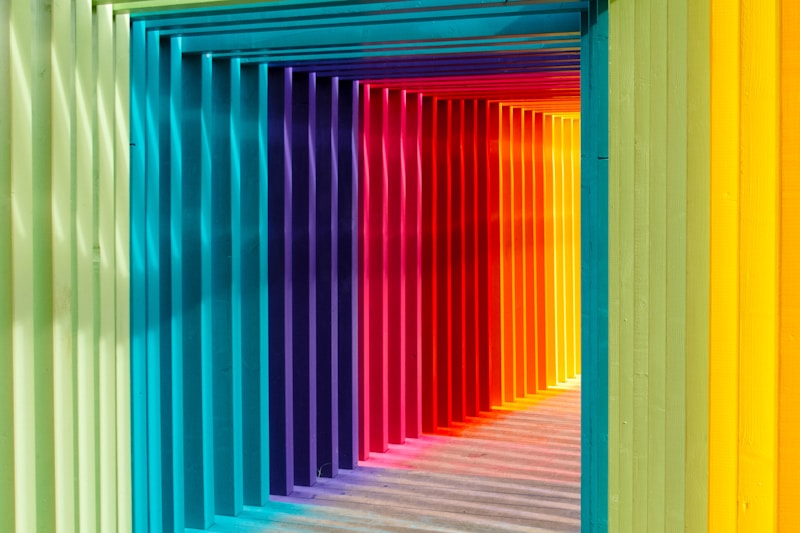Understanding Color Theory for Bridal Makeup Choices
Understanding Color Theory for Bridal Makeup Choices
Bridal makeup is not just about applying products; it's an art that requires understanding the nuances of color theory. This understanding can make a significant difference in how a bride looks on her special day. Choosing the right colors can enhance natural beauty, complement skin tones, and create a harmonious overall look. In this article, we will explore the fundamentals of color theory, its application in bridal makeup, and provide tips for brides to make informed choices.
What is Color Theory?
Color theory is a set of principles used to understand how colors interact and relate to each other. It encompasses concepts like the color wheel, color harmony, and the psychological effects of color. For bridal makeup, understanding color theory can help in selecting shades that not only match the wedding theme but also enhance a bride's features.
The Color Wheel
The color wheel is a visual representation of colors arranged according to their chromatic relationships. It consists of primary, secondary, and tertiary colors. Here’s a basic overview:
| Primary Colors | Red, Yellow, Blue |
| Secondary Colors | Green, Orange, Purple |
| Tertiary Colors | Red-Orange, Yellow-Orange, Yellow-Green, Blue-Green, Blue-Purple, Red-Purple |
Brides can use the color wheel to find complementary shades for their makeup. For instance, if a bride would like to wear a golden gown, pairing it with warm shades like peach or coral will create a cohesive look.

The Role of Undertones
Skin undertones can significantly influence makeup choices. There are three primary types of undertones: cool, warm, and neutral. Identifying a bride's undertone can help in selecting the right foundation, lipstick, and blush. Here's how to determine undertones:
- Cool Undertones: Skin appears pink, red, or blue. Silver jewelry tends to look more flattering.
- Warm Undertones: Skin appears yellow, peachy, or golden. Gold jewelry usually complements warm undertones better.
- Neutral Undertones: A mix of both warm and cool undertones. Both gold and silver jewelry can look good.
Color Selection for Different Skin Tones
Once undertones are identified, brides can use this knowledge to select colors that suit their skin tone:
| Skin Tone | Recommended Colors |
| Fair | Soft pastels, pinks, and lilacs |
| Medium | Corals, warm reds, and mauves |
| Dark | Deep berry shades, bronze, and vibrant jewel tones |
This approach helps highlight a bride's natural glow and creates a balanced look that photographs beautifully.
How to Apply Color Theory in Bridal Makeup
Bridal makeup involves several aspects, including foundation, eyeshadow, blush, and lipstick. Here’s how to apply color theory in each category:
Foundation
Choosing the right foundation is crucial. It should match the bride's skin tone perfectly. For warm undertones, look for foundations with golden or yellow hues. In contrast, cool undertones are better paired with foundations that have a pink base. Testing foundations under natural light will ensure a close match.
Eyeshadow
When selecting eyeshadow colors, consider the wedding theme and the bride's eye color. For instance:
- Blue Eyes: Warm shades like copper and peach make blue eyes pop.
- Brown Eyes: Almost every color works, especially earthy tones like greens and golds.
- Green Eyes: Purples and mauves will enhance the green tones.
Blush
The right blush can make the bride look fresh and radiant. A general guideline is to choose:
- Cool Undertones: Go for pinks or plums.
- Warm Undertones: Try peaches or coral tones.
Lipstick
Lipstick is often a focal point in bridal makeup. The color of the lipstick should be in harmony with the overall makeup and dress. For a classic look, consider:
- Neutral lip colors for a subtle look.
- Bold reds for a vintage-inspired vibe.
- Nude shades for a modern touch.
Makeup Techniques to Enhance Color Choices
Choosing the right color is only part of the process. The techniques used to apply makeup can also influence the final look. Here are some essential techniques:
- Layering: Build up color gradually to achieve the desired intensity.
- Blending: Blend edges for a seamless transition between colors.
- Highlighting and Contouring: Use lighter and darker shades to define features, giving the face dimension.
Conclusion and Tips for Brides
Understanding color theory is an essential part of bridal makeup choices. By identifying skin undertones, choosing the right colors, and using proper techniques, brides can achieve a stunning look that enhances their natural beauty. Here are some final tips:
- Test makeup colors before the wedding day to see how they look in different lighting.
- Consider the wedding theme and attire when selecting colors.
- Don't be afraid to consult a professional makeup artist for personalized advice.
By embracing color theory in makeup choices, brides can ensure they look and feel their best on their big day. With thoughtful preparation and understanding of their preferences, every bride can achieve a flawless and beautiful appearance that reflects her unique style.
